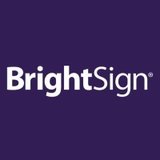Blog
Digital signage goes back to school: A tale of 2 use cases
As the summer draws to a close, students (often reluctantly) gear up for the start of the academic year. And as digital signage continues to infiltrate schools at an increasing rate, many students will be greeted by new installations on their campuses.

September 9, 2015 by Jeff Hastings — CEO, BrightSign
As the summer draws to a close, students (often reluctantly) gear up for the start of the academic year. And as digital signage continues to infiltrate schools at an increasing rate, many students will be greeted by new installations on their campuses.
While it's true that new AV implementations are happening at schools in primary, secondary and collegiate institutions, we find that not all digital signage implementations at these schools are created equal. Most notably, we're seeing distinct trends emerge at the high school and college levels. Both are embracing digital signage, but implementations look much different at the high school level than they do on college campuses.
Many high schools are either starting from scratch with their initial digital signage deployments, or they're modestly expanding their existing infrastructure. Budget constraints are limiting these deployments; however, in many cases those budget constraints are offset by state grant funds. Common upgrades and installations include updated emergency notification systems, integration with Cisco-based phone systems and other basic improvements.
College implementations, on the other hand, are in a league of their own. Funding is more plentiful and the campuses are much more expansive, leaving the door open for some jaw-dropping digital signage installations. Video walls are becoming increasingly common on college campuses. They are as impressive as they are informative, delivering pertinent information to students, faculty and visitors alike. These video walls also allow for school branding opportunities and sponsor recognition.
Universities are also leveraging new social applications for digital signage. For example, some college campuses offer new students the ability to use Twitter or Instagram to make posts to campus screens during orientation, thus creating a dynamic collection of social media content across much of the incoming student body.
Interactivity also reigns supreme on college campuses. Interactive kiosks are being used for a multitude of purposes. For example, kiosks offer wayfinding capabilities that help new students become oriented with their campuses. But beyond simple navigational functionality, universities are using their kiosks for other purposes. For example, the University of Massachusetts recently installed a kiosk that lets visitors learn about veterans of its football program, examining the careers of UMass players as they progressed through the NFL.
I'm particularly inspired to learn how digital signage is bridging the gap between high school and college. Some high schools are utilizing their digital signage to display event details or real-time social media feeds from nearby universities. This content is a unique way to expose high schoolers to activities at the colleges they may attend someday. This helps motivate students to perform well in high school to pave the way to college admission.
In many ways, digital signage is enriching the educational process, and I believe we've just begun to see the positive impact our industry will have on educational institutions of all levels.
About Jeff Hastings
Included In This Story
BrightSign
BrightSign is the global market leader in digital signage media players, offering the most reliable, secure and sophisticated solid-state media players on the market today.





